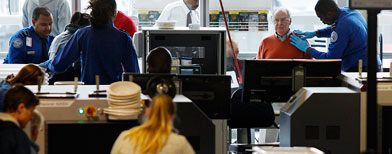The Daily Drift
Today's horoscope says:You have a clearer sense of purpose today than you've had in a long time -- it is obvious what you need to do.
The only question is how are you going to do it?
Experiment throughout today and you'll soon find a few ideas on what to do next -- you might even get lucky and come upon the answer.
The most important thing you need to remember is to not count anything -- or anyone -- out.
Listen to all ideas, entertain everyone's viewpoints, and you'll come out enlightened.
Some of our readers today have been in:
Sittard, Limburg, Netherlands
Dublin, Dublin, Ireland
Montreal, Quebec, Canada
Paris, Ile-De-France, France
Petaling Jaya, Selangor, Malaysia
Santander, Cantabria, Spain
Sydney, New South Wales, Australia
Wellington, Wellington, New Zealand
Geneva, Geneve, Switzerland
Edithvale, Victoria, Australia
Oakville, Ontario, Canada
as well as Bulgaria, Austria, Georgia, Mexico, Japan, Peru, Kuwait, Serbia, Bangladesh, Latvia, Greece, Scotland, Hong Kong, Denmark, Wales, Iran, Singapore, Poland, Taiwan, Sweden, Saudi Arabia, Afghanistan, Belgium, India, Croatia, Pakistan, Romania, Finland, Korea, Argentina, Vietnam, Egypt, Russia, South Korea, Indonesia, Puerto Rico, Brazil, New Zealand, United Arab Emirates, China, Iraq, Ecuador, Nigeria, Morocco, Chile, Honduras, Paupa New Guinea, Moldova and in cities across the United States such as Aurora, Brookings, Huntsville, Westport and more.
Today is:
Today is Sunday, December 12, the 346th day of 2010.
There are 19 days left in the year.
Today's unusual holiday or celebration is:
Poinsettia Day.
Don't forget to visit our sister blog!










 Nowhere in the world is archaeology as tied to politics as it is in Israel. Different factions have a stake in determining where the ancient kingdoms of Judah and Israel were ruled from, and how powerful its leaders were. At the heart of the matter is King David.
Nowhere in the world is archaeology as tied to politics as it is in Israel. Different factions have a stake in determining where the ancient kingdoms of Judah and Israel were ruled from, and how powerful its leaders were. At the heart of the matter is King David.





 An 18th-century vagabond in England, exhausted and famished, came to a roadside inn with a sign reading, “George and the Dragon.” He knocked.
An 18th-century vagabond in England, exhausted and famished, came to a roadside inn with a sign reading, “George and the Dragon.” He knocked.













